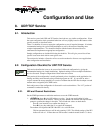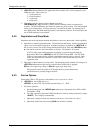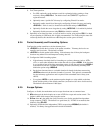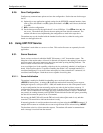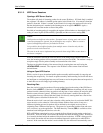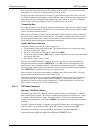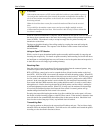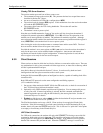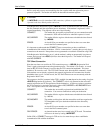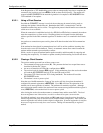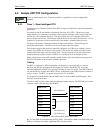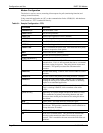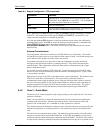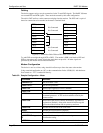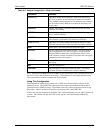
Configuration and Use DART 300 Modem
Page 70 2110212 Rev 1.0
Closing TCP Server Sessions
The session remains open until one of these events occur:
• The command to hang-up the session (H). This presumes the host has escaped data state as
described in Section 6.6.3 above.
• An on-to-off transition of DTR with a configuration of &D2.
• The session inactivity timeout (S30) expires. If this mechanism closes the session the modem
will send the NO CARRIER result.
• The remote client issues the TCP closing handshake. The modem will send the
NO CARRIER result.
• The modem is reset or power-cycled.
Note that use of the H command to “hang-up” the session will also de-register the modem if
configured for manual registration (+WS173=0). Use of H1 will force de-registration of the
modem even if auto-registration is enabled. The modem will remain de-registered. Although
auto-registration remains enabled, the modem will not resume auto-registration until the register is
reset (+WS173=1) or the modem itself is reset or power cycled.
After closing the session, the modem returns to command state and de-asserts DCD. The local
host can wait for another client call to open a new session.
Provided the modem is set to auto-register and H1 is not used to close the session, the modem is
ready for the next server session without further configuration. Auto-answer and network
registration will remain in their original configuration. If manual registration is used, the host
must re-register to be ready for the next session request.
8.3.2. Client Sessions
Client sessions are those in which the local device initiates a conversation with a server. There are
two mechanisms for this: a host command to dial the target server, or Auto-dial on Start-up, which
will dial a predetermined IP and port.
Auto-dial on Start-up is described in Section 5.3 above. It can be used by dumb and semi-
intelligent hosts but does place constraints on the overall system.
Issuing the Dial command (D) requires an intelligent host device, capable of handling faults if the
connection fails.
Both UDP and TCP protocols use the same configuration and dialing sequence.
(AT is omitted for brevity):
1. On start-up, either monitor the DART 300 for the OK result code, or check for an assertion of
the CTS control line to indicate the modem is ready.
2. Optionally verify CDPD channel acquisition and registration. You can manage this process
as suits your need. If manual registration is selected, the Dial command can handle the
network registration process using the NEI indexed by the auto-register index. See the AT
Command Reference for details.
3. D<dest> to dial the server where <dest> is either the destination IP and port number or an
index into the Friends List to use “quick dial”.
The IP of the destination can be any valid IP. Client sessions do not apply the Friends Only
restrictions. If the Dial command is given bad syntax including an invalid destination IP or port
number, then it will return the ERROR result code. This is also true if a “quick dial” index points
to an empty or invalid entry in the Friends Only list.
UDP Client Connection
For UDP mode connections, the modem will reply with CONNECT following a successful dial
command at which point you are in data state. This transition can happen without the modem
being registered if configured with +WS179=0 (the default). If the modem was not registered,
then the dial command will perform the task. When the CONNECT message is received, the




